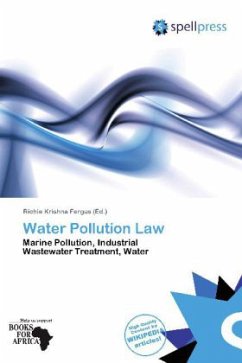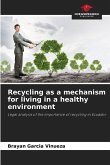Domestic sewage is 99.9 percent pure water, while the other 0.1 percent are pollutants. Although found in low concentrations, these pollutants pose risk on a large scale. In urban areas, domestic sewage is typically treated by centralized sewage treatment plants. In the U.S., most of these plants are operated by local government agencies, frequently referred to as publicly owned treatment works (POTW). Municipal treatment plants are designed to control conventional pollutants: BOD and suspended solids. Well-designed and operated systems (i.e., secondary treatment or better) can remove 90 percent or more of these pollutants. Some plants have additional sub-systems to treat nutrients and pathogens. Most municipal plants are not designed to treat toxic pollutants found in industrial wastewater.
Bitte wählen Sie Ihr Anliegen aus.
Rechnungen
Retourenschein anfordern
Bestellstatus
Storno








